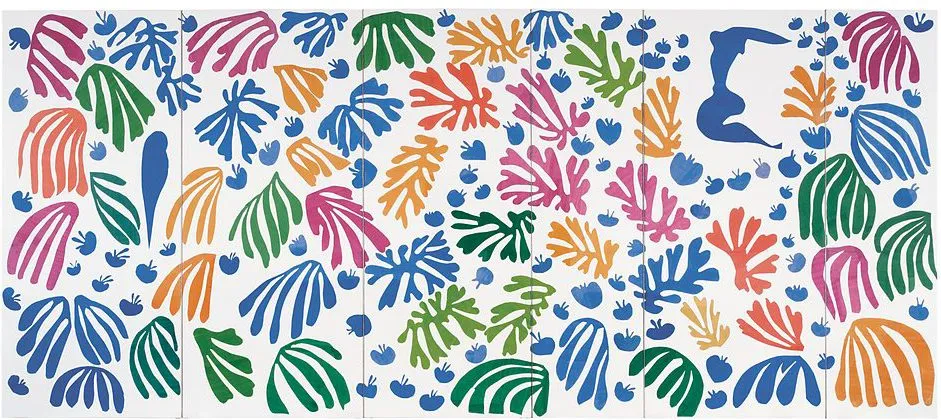Every time I view an art exhibit I go through with dual perspectives—the first an appreciation for the form, function and technique of the artist within a historical context. The second, to see what metaphors and analogies I can draw from the form, function, and technique to my personal and professional lives.
Late in his life, Henri Matisse’s health declined, and he found himself sanctioned to a chair or bed for the majority of his day. Instead of giving up on creativity, he found a new outlet, what he called “drawing with scissors” that enabled him to transcend his physical limitations and resulted in a new art form that is now on a glorious display at the Museum of Modern Art in New York City.
What’s interesting about this art is the technique of overlay, non-waste, and maneuverability—a fantastic metaphor for employee development.
Overlay—Matisse took considerable time deeming any aspect of a cut-out complete. Since each piece cut was done from free-form, no two were alike. When he wasn’t completely satisfied with the performance from a piece, he would add subtle changes by pinning tiny cuts of paper to make the form just right. He didn’t discard the imperfect piece.
In corporations we often subjugate the imperfect—when all that is needed is a subtle shift or minor addition. We look at the short-term picture instead of the long-term masterpiece. Investing in correcting imperfections with minor additions instead of removing them all together and starting from scratch is a long-term strategy with unlimited potential.
Non-waste—Matisse used both the positive and the negative space with his cut-outs. When a piece of paper fell to the ground after the original form was cut, he evaluated the leftover and found a way to organically work it into his composition—or into future compositions.
With employee development, we often see only the final goal—the final product—without giving appreciation to the steps that were taken to reach that end state. The efforts that your employees exert to deliver the final result need to be recognized. Who knows—the steps that were taken along the way could result in a product of their own.
Maneuverability—Matisse used his walls as a living canvas. He would direct cut-outs to be pinned in one location, only to move them around multiple times after until he found just the right fit. Often, the right move of one piece would lead to the creation of an entire new work, or the placement of a piece into a new landscape.
With employees, finding the right fit is important. To be immovable is detrimental to organizational progress. A good leader will know how to figure out where to best place each employee, realizing that the initial intention—perhaps the initial job someone was hired for—may not be the right fit.
Inject overlay, non-waste, and maneuverability techniques into your employee development approach and see what masterpieces develop.




